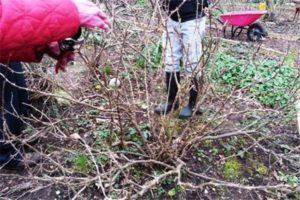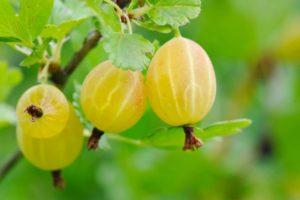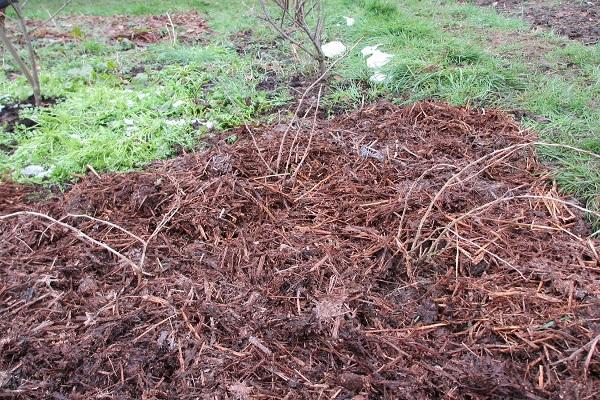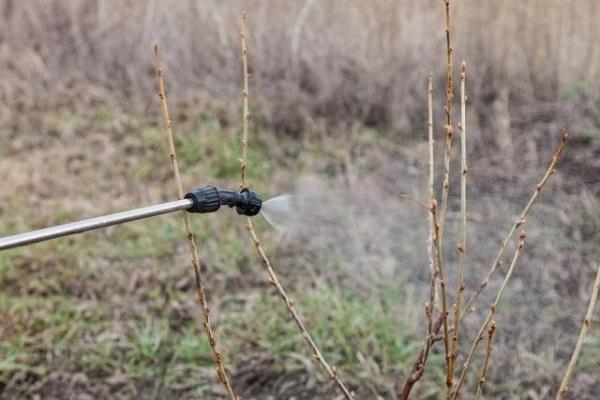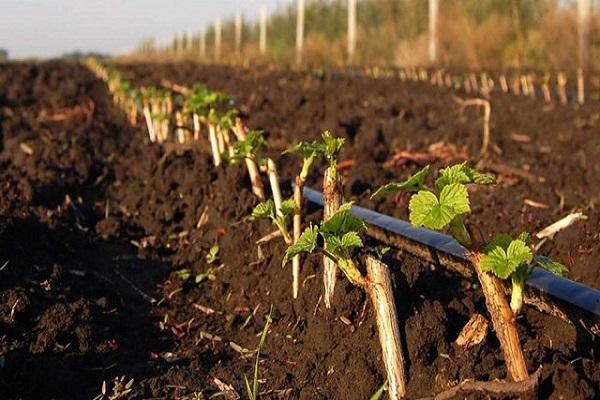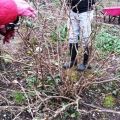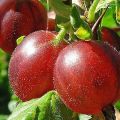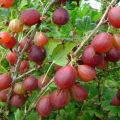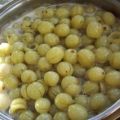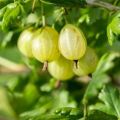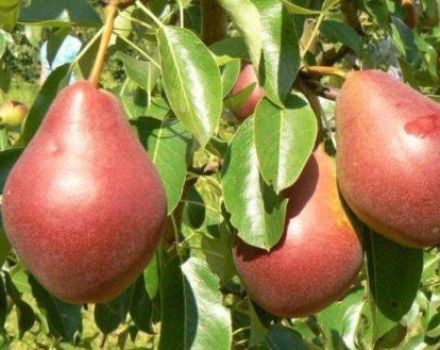The better to feed the gooseberry, how to water it correctly in summer and autumn
Gooseberries are prized for their taste and health benefits. Proper care of the bush promotes long-term fruiting: one bush can produce a stable harvest for 20 years. Those who grow fruit and berry crops are well aware that gooseberries need regular feeding.
Content
- 1 The value of feeding when growing gooseberries
- 2 Fertilization methods
- 3 How to fertilize gooseberries and application rules
- 4 Folk remedies for feeding bushes
- 5 How to feed gooseberries: a scheme for feeding by months
- 6 The nuances of feeding bushes
- 7 How to water gooseberries correctly for a good harvest
- 8 Regularity and rate of irrigation
The value of feeding when growing gooseberries
Top dressing is especially necessary for "northern grapes" because of the long growth in one place. The soil under the bushes is not completely renewed, therefore the lack of additional nutrients can negatively affect the growth of the bush and its further fruiting.
The lack of additional fertilization leads to noticeable consequences:
- shrinking fruits;
- decrease in frost resistance indicators;
- wilting of leaves;
- drying of the ovaries.
In addition, stable growth depletes the plant; it needs aids to recuperate.
Fertilization methods
According to the options for applying top dressing to the soil, they are divided into several types:
- main (includes food before planting, digging and loosening);
- pre-sowing (produced by direct planting, buried together with a seedling or shed after compacting the soil);
- regular (root and foliar, during the growing season).

Foliar
Methods for introducing nutrients using spray guns, special devices. Such methods make it possible to quickly convey aids to the bush. They are recommended for problems with the root system.
Main advantages:
- helps to increase the rates of fruiting;
- leads to the development of leaves, the appearance of ovaries;
- the success of foliar feeding increases under adverse weather conditions.
The main disadvantage is the low concentration of the nutrient in the processing solution.
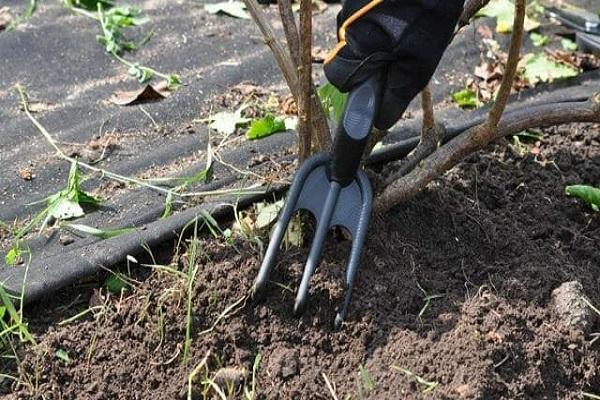
Under the root
Root fertilization is the main option used by summer residents and gardeners. It includes the use of liquid and dry forms of fertilizers.
Advantages:
- improving soil quality;
- sufficient concentration of nutrients;
- the supply of nutrition to the root system;
- simple procedure.
Root dressing is suitable for shrubs with a developed and intact root system.
Attention! An overdose of fertilizer during root feeding can burn the roots.
How to fertilize gooseberries and application rules
Gooseberry bushes are fed with mineral or organic fertilizers. Alternative methods are suitable that allow you to expand the list of nutrients.
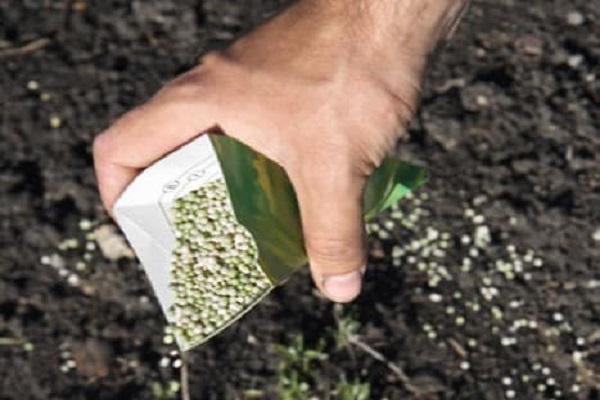
Nitrogen
Nitrogen-containing complexes are in the first place among mineral supplements. They are especially needed in the spring when the shrub is actively growing and gaining color. Nitrogen affects the normalization of some processes:
- an increase in green mass;
- the thickness of the stems and leaf plates.
To saturate the soil with nitrogen, use:
- Ammonium sulfate. Promotes an increase in the defenses of shrubs, affects the growth of green mass. Fertilizer is produced in granular or liquid form. Its advantages are considered to be rapid dilution with water, short absorption times and noticeable performance indicators.
Important! Ammonium sulfate increases soil acidity.
- Ammonium nitrate. Performs 2 functions simultaneously: saturates the soil and affects the growth of the bush. It is easy to breed, process, and non-toxic. There is a danger of leaf burns in case of overdose.
- Carbamide or urea. Fertilizer is universal. It is used to improve soil performance, heal the bush and during the period of pest control.
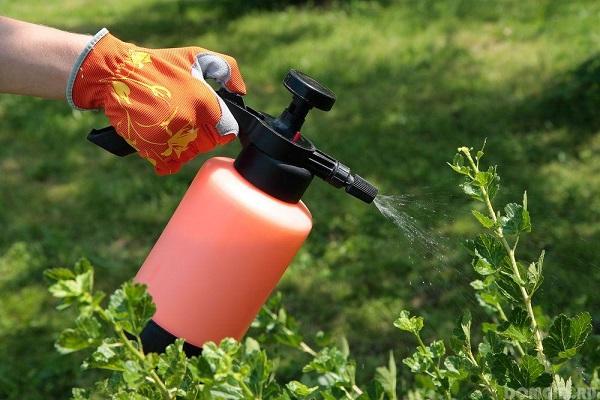
Phosphoric
Phosphorus is added to the soil in spring and autumn. Phosphorus is necessary for a plant to form a trunk, develop a root system. Use is possible in the form:
- phosphate rock;
- superphosphates;
- superphosphates of double action.
Phosphate rock is a crumb obtained by crushing rocks of a certain type. For assimilation, it is mixed with the soil along with other acidic fertilizers. This method is used 1 time over 5 years.
Superphosphates are the most common fertilizers for gooseberries; they are applied to the soil at any time of the growing season. They can be mixed with humus or added separately.
Double superphosphates are produced in granular form. When introduced, they are mixed with substances that increase digestibility.
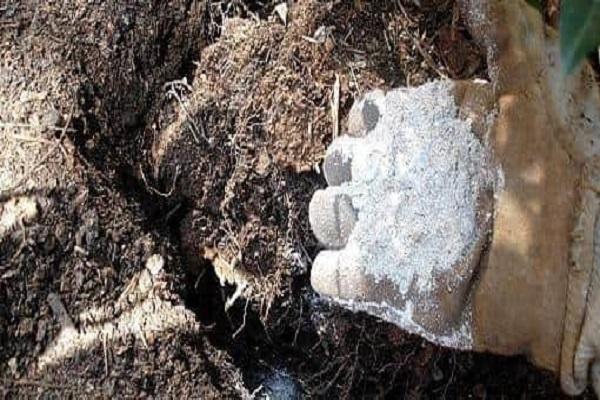
Potash
Gooseberries especially need potassium. It is introduced at the onset of a period of active development of buds, flowering and formation of berries.
The most popular drugs:
- potassium sulfate;
- potassium salt.
Potassium sulfate contains impurities of other useful minerals: potassium and magnesium. The fertilizer is sold in the form of a friable white powder, it is applied to the soil dry or as part of a solution.
Often the need to use potassium dressings is dictated by an analysis of the appearance of gooseberry bushes, a lack of potassium is indicated by:
- yellowing of the leaves;
- the appearance of brown spots on leaf plates;
- dry areas along the edges of the plates;
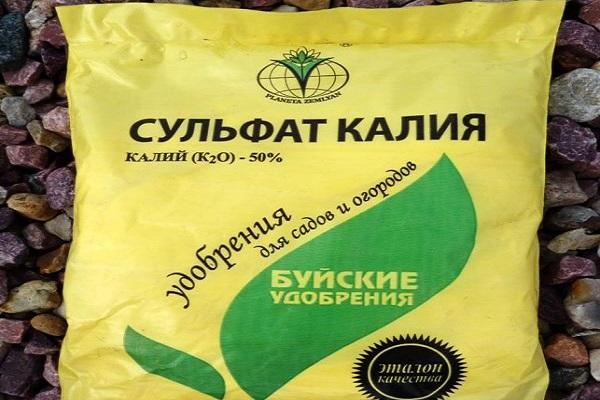
Complex
Unlike single-component complexes, complex complexes are capable of solving several problems at once. Gooseberries need complex feeding during the ripening of berries, as well as during the period when the shrub leaves the sleep phase.
Complexes that gooseberries love:
- Nitrophoska. Contains essential minerals: nitrogen, potassium, phosphorus.
- Ammophos. Contains phosphorus and nitrogen, suitable for soils that have lost nutrients.
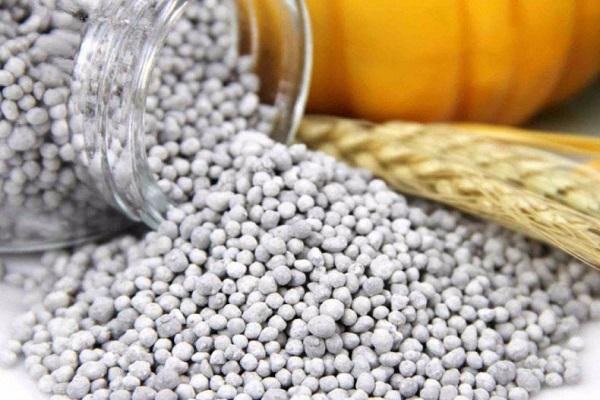
Organic
Organic food is called feeding of natural origin. These include:
- compost;
- manure;
- humus;
- bird droppings.
Organic contains various minerals, improves soil quality. For 1 gooseberry bush, 10 liters of organic matter is enough.
Solutions are prepared according to the general formulas:
- manure: 1 kilogram per 7 liters of water;
- compost: 1 kilogram per 4 liters of water;
- humus: 1 kilogram per 5 liters of water;
- litter: 1 kg per 12 liters of water.
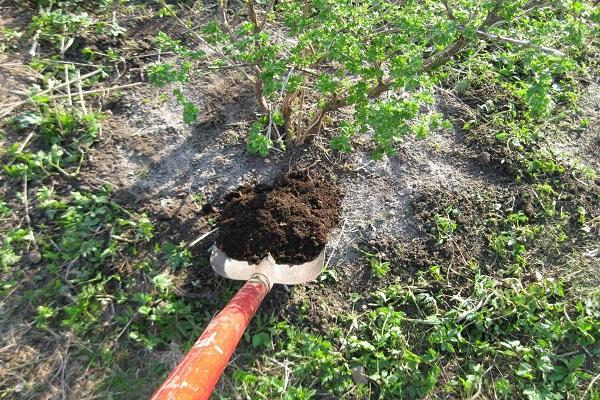
Folk remedies for feeding bushes
Many gardeners believe that chemicals are harmful to plants, and feed gooseberries with self-prepared formulations.
- Infusion of potato peelings. 1 kilogram of cleaning is insisted in 10 liters of boiling water for 3 days.
- Banana infusion. 5 bananas are cut into pieces, insisted in 10 liters of boiling water. This mixture helps to replenish potassium stores.
- Ash. A solution of wood ash is sprayed on the bushes in the spring, it protects the bushes from insect parasites. This is the most effective of the folk methods.
- Egg shell. The shell is pounded, the resulting powder is mixed with soil before watering. For one bush, 50 grams of powder is enough. The powder helps to reduce the acidity of the soil, makes its structure lighter.
- Yeast. Raw yeast, 1 kilogram in volume, is diluted in 5 liters of warm water. The shrub is watered with this solution. It is customary to combine yeast top dressing with soil cultivation with wood ash. This is done in order to return the potassium washed out by the yeast to the soil.
- Green infusion. Nettle is used for it. 5 kilograms of nettle are poured with 10 liters of water and insisted for a week. To the resulting infusion add 10 parts of pure water and treat the shrub with a spray.
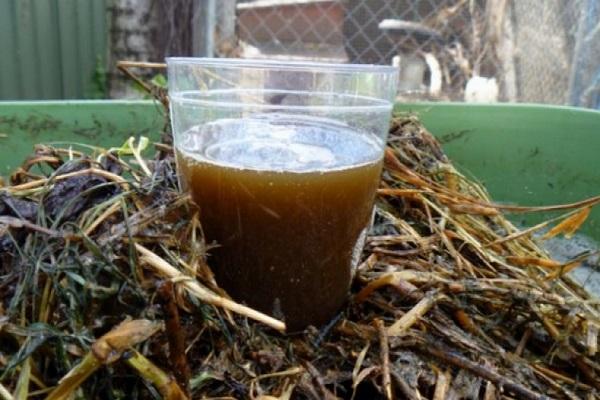
How to feed gooseberries: a scheme for feeding by months
The introduction of aids is directly dependent on the season. Each period of vegetative development has its own characteristics.
In the spring
The spring period is characterized by intensive growth, therefore nitrogen is an essential component of fertilizers.
| Period | Top dressing |
| March | · ammonium sulfate; Potassium sulfate; · Manure. |
| April | Urea; · Manure. |
| May | · Litter; Urea. |
Summer
The gooseberry is preparing for fruiting and needs potassium and phosphorus.
| Month | Fertilizer types |
| June | Urea; Potassium sulfate; Superphosphate. |
| July | · Manure; · Wood ash. |
| August | · Manure. |
In autumn
The autumn period is characterized by the fact that the bush needs additional minerals to restore strength. They are brought in according to a certain scheme.
| Period | Type of feeding |
| September | Potassium sulfate; Superphosphate. |
| October | Organic fertilizers |
The nuances of feeding bushes
In order to grow a strong shrub capable of stably bearing fruit, it is recommended to provide supplementary feeding with nutrients not only during flowering, fruiting, but also when planting a seedling. For this, complex mixtures are used.
When planting a bush
The prepared pit is fertilized with a mixture based on:
- peat;
- superphosphate;
- potassium sulfate;
- wood ash;
- humus.
The mixture is thoroughly mixed with the main soil, then a depression is made, a seedling is placed.
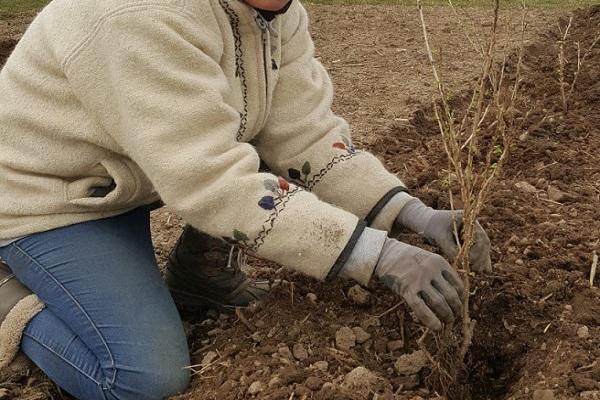
During flowering and fruiting
During flowering and fruit ovary, additional procedures are carried out. Apply only root dressing, foliar processing during the ripening period for gooseberries is excluded. Dissolve manure in water in a ratio of 1:10, gently shed furrows around the bush.
A solution of whey or kefir is used as a folk remedy.
How to water gooseberries correctly for a good harvest
Watering is important for gooseberries. It is watered at the root, so that the water fills the hole. After watering the next day, the soil is gently loosened.
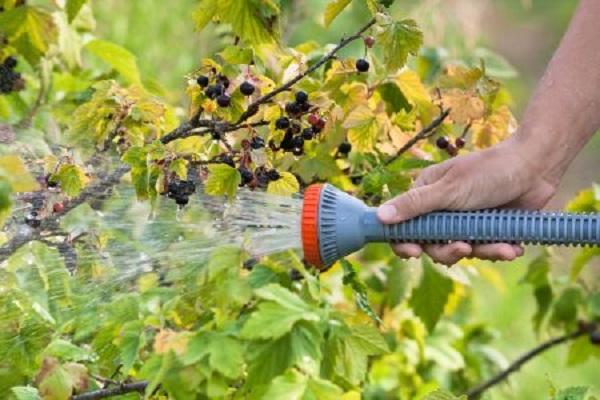
Regularity and rate of irrigation
How often the gooseberry is watered depends on its general condition. The shrub needs regular, but not abundant irrigation.
In the spring
The spring period of active growth is characterized by an increased need for watering.
| March | gooseberries are not watered |
| April | at the end of the month, in warm weather, make a "test watering", 1-2 buckets of warm water at the root |
| May | by the end of the month, the volume of watering is increased, an adult bush needs up to 40 liters of water, 2-3 times each, for 14 days |
Summer
For the formation of ovaries, flowering, the formation of berries, the shrub needs an increase in watering.
| June | 40 liters per 1 adult bush, 2 times weekly |
| July | 30-40 liters, once a week |
| August | watering is reduced, based on weather conditions |
Watering rules can be adjusted upward or downward when a hot dry summer sets in or when there is heavy rainfall.
In autumn
The end of September, the beginning of October is the time for the moisture quenching irrigation. A period is suitable for him when the temperature is kept within +2, +1 degrees. Such irrigation is used as a procedure for hardening gooseberries before wintering. A trench hole is dug around the bushes, filled with water. For 1 adult bush, 20-30 liters of cool water is enough.
If you take care of the gooseberry correctly, control the condition of the soil on which it grows, then you can expect stable fruiting for many years.
